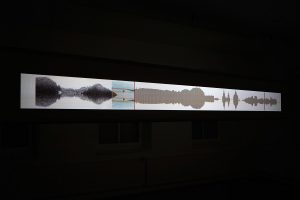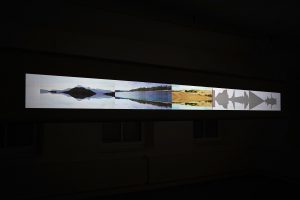(2019 – 2020)

18,5 x 45 cm | Pigment print on Hahnemühle paper | Edition of 7 (+ 2 e.a.)

18,5 x 45 cm | Pigment print on Hahnemühle paper | Edition of 7 (+ 2 e.a.)

18,5 x 45 cm | Pigment print on Hahnemühle paper | Edition of 7 (+ 2 e.a.)

18,5 x 45 cm | Pigment print on Hahnemühle paper | Edition of 7 (+ 2 e.a.)

18,5 x 45 cm | Pigment print on Hahnemühle paper | Edition of 7 (+ 2 e.a.)

18,5 x 45 cm | Pigment print on Hahnemühle paper | Edition of 7 (+ 2 e.a.)

18,5 x 45 cm | Pigment print on Hahnemühle paper | Edition of 7 (+ 2 e.a.)

18,5 x 45 cm | Pigment print on Hahnemühle paper | Edition of 7 (+ 2 e.a.)

18,5 x 45 cm | Pigment print on Hahnemühle paper | Edition of 7 (+ 2 e.a.)

18,5 x 45 cm | Pigment print on Hahnemühle paper | Edition of 7 (+ 2 e.a.)

18,5 x 45 cm | Pigment print on Hahnemühle paper | Edition of 7 (+ 2 e.a.)

18,5 x 45 cm | Pigment print on Hahnemühle paper | Edition of 7 (+ 2 e.a.)

18,5 x 45 cm | Pigment print on Hahnemühle paper | Edition of 7 (+ 2 e.a.)

18,5 x 45 cm | Pigment print on Hahnemühle paper | Edition of 7 (+ 2 e.a.)

18,5 x 45 cm | Pigment print on Hahnemühle paper | Edition of 7 (+ 2 e.a.)
IDEE DER NATION:
EINE VORSTELLUNG
— Miha Colner
Kunst kann nie unmittelbar die Welt verändern oder sie gar retten – was sie aber kann, ist Dinge und Gegebenheiten in eine andere Perspektive zu setzen, die sich von dominanten öffentlichen und medialen Diskursen unterscheidet.
Die Ausstellung Imagined Carinthia: Rethinking Reality widmet sich der Kultur und Identität – sie fordert uns auf, diese zwei Begriffe, die zwar relativ neu sind, aber heutzutage als Selbstverständlichkeit erscheinen, neu zu überdenken und zu reflektieren. Nationale Identitäten, wie wir sie heute kennen, entwickelten sich im 18. und 19. Jahrhundert, als die »Idee der Nation« vom Volk als emanzipatorisches Element im Kampf gegen das übernationale, elitäre, feudale Herrschaftssystem begrüßt wurde und ihm im »Namen Gottes« mehr Mitbestimmungsrechte zusicherte.
In der Zeit der Aufklärung, in der humanistisches und wissenschaftliches Denken sich immer mehr entwickelten, ersetzte die Idee der Nation als gemeinsamer Nenner von territorial, sprachlich und kulturell miteinander verbundenen Gruppen die Glaubensdogmen über die absolute Macht eines einzelnen Geweihten oder einer Gruppe von geweihten Personen. Die nationale Zugehörigkeit wurde somit rasch als überaus starkes Identifikationsmerkmal gefestigt und befeuerte in den letzten 200 Jahren zahlreiche Konflikte und Kriege. Daher sollten wir auch nationale und kulturelle Identitäten mit einer gewissen Distanz betrachten und begreifen.
Von dieser Betrachtung aus brechen die künstlerischen Arbeiten von Marko Lipuš mit stagnierenden, aber immer noch vorhandenen Konventionen und Vorstellungen von Nation und Nationalstaat als etwas Zementiertes und Statisches. Der Künstler stellt die nationale Identität in Frage. Er verneint sie nicht, da sie unanfechtbar präsent ist. Er befüllt sie nur mit neuen Überlegungen und einer neuen Perspektive. Marko Lipuš spricht die Frage der nationalen Identität an, indem er sie mit ihrem ultimativen Symbol – der österreichischen Nationalhymne – verbindet. Dafür wählt er die ersten fünf vordergründigen Motive der ersten drei Strophen der Hymne aus und bildet sie fotografisch ab.
Die Arbeit hat durchaus humoristische Aspekte und zeigt uns die Tatsache auf, dass nationale Mythologien aus unterschiedlichen Ländern sich sehr ähnlich sind. Sie verkörpern die identische Idee von Nationen, dass jede einzelne Nation sich immer als die Beste, die Stärkste versteht, jede einzelne Heimat die schönste ist und ihre Flüsse am klarsten sind. Dies hängt wahrscheinlich damit zusammen, dass die meisten Nationalhymnen, wie wir sie heute kennen, im 19. Jahrhundert entstanden sind und so inhaltlich wie kompositorisch relativ ähnlich sind.
Dieses Phänomen thematisierte zum Teil auch der deutsche Künstler Anselm Kiefer in den Sechziger- und Siebzigerjahren. In seiner künstlerischen Arbeit zeigte er auf ironische Weise, dass Berge, Täler, Flüsse und Seen wichtige Begrifflichkeiten für jede Nation sind. Als Gegenstück erschuf er das Ebenbild universeller monumentaler Landschaften, die auf jede beliebige Nation übertragen werden können. Genauso wie wir in zahlreichen Nationalhymnen unterschiedlicher, nicht miteinander verbundener Länder ähnliche Verse über die Verkünder und Symbole nationaler Identität hören.
Marko Lipuš stellt sie in ihrer buchstäblichsten Form dar – im Bild. Der Sound der futuristischen Hymne, der sich aus der visuellen Form ergibt, stammt von Sašo Kalan.
THE IDEA OF NATION—
IMAGINED
— Miha Colner
Art is never able to change the world in any immediate sense, let alone save it—but it can put a new perspective on things and events, one that differs from dominant public or media discourses.
The exhibition Imagined Carinthia: Rethinking Reality is devoted to culture and identity—it encourages us to rethink and reflect these two concepts, which are relatively new but seem more or less self-evident nowadays. National identities, as we know them today, developed in the eighteenth and nineteenth centuries, when the “idea of a nation” was welcomed by the populace as an emancipatory element in the struggle against supranational, feudal elites who believed that they were “ruling by divine right.”
In the Age of Enlightenment, in which humanist and scientific thought developed at a rapid pace, the idea of a nation replaced the dogmas of the absolute power of a single chosen man or a group of chosen men as a common denominator of territorially, linguistically, and culturally connected groups. National belonging thus quickly cemented as an incredibly strong means of identification and fueled many conflicts and wars over the past two hundred years. This is why it’s crucial to view and understand national and cultural identities with a certain distance.
From this vantage point, Marko Lipuš’s artistic works break with stagnant but still extant conventions and ideas of nation and nation state as a cemented, static entity. The artist calls national identity into question. He doesn’t deny it, since it is unequivocally present. He merely fills it with new thoughts and a new perspective. Marko Lipuš addresses the question of national identity by linking it to its ultimate symbol—the Austrian national anthem. He has picked the first five dominant motifs from the first three stanzas and has photographed literal visual representations of them.
This work has thoroughly humorous aspects and points to the fact that national mythologies may be very similar across different countries. They embody the idea identical across nations that every single nation sees itself as the best, the strongest—each home country is the most beautiful and its rivers the most pristine. This might have to do with the reality that most national anthems we know today were written in the nineteenth century and therefore resemble each other both in content and composition.
The German artist Anselm Kiefer addressed this phenomenon in part in the 1960s and ’70s. In his artistic work, he showed, with a great deal of irony, that mountains, valleys, rivers, and lakes are important concepts for all nations. As a complementary piece, he created the likeness of universal monumental landscapes that could be applied to any and all nations—much as we hear similar verses in numerous national anthems of widely different unconnected countries about the mouthpieces and symbols of national identity.
Marko Lipuš depicts them in their most literal form: as images. The sound of the futuristic anthem, generated on the basis of this visual form, was created by Sašo Kalan.
Mit freundlicher Unterstützung von | With Kind support from








